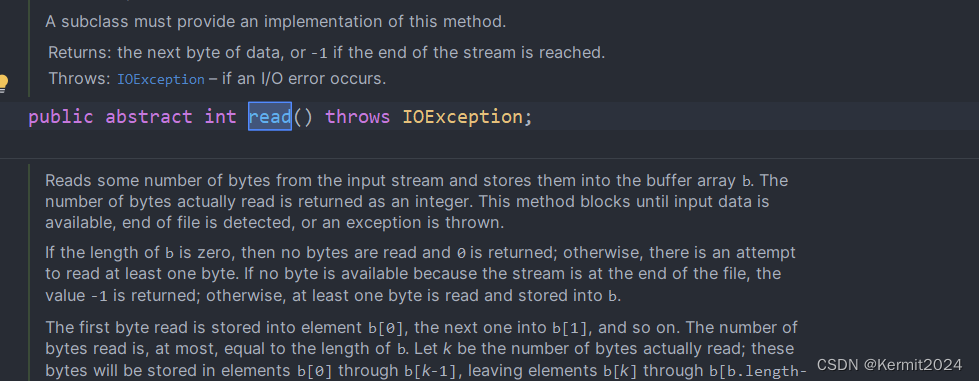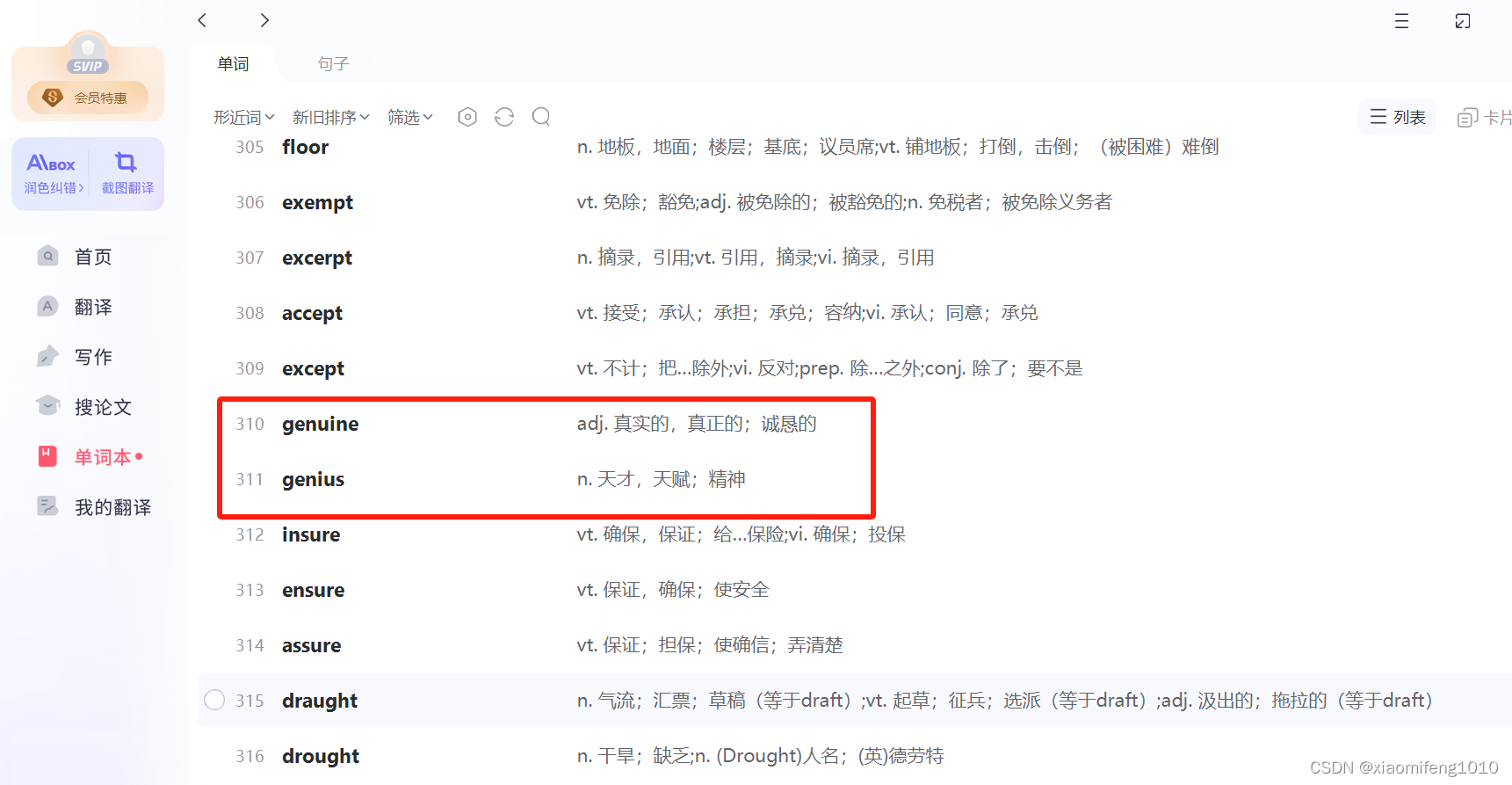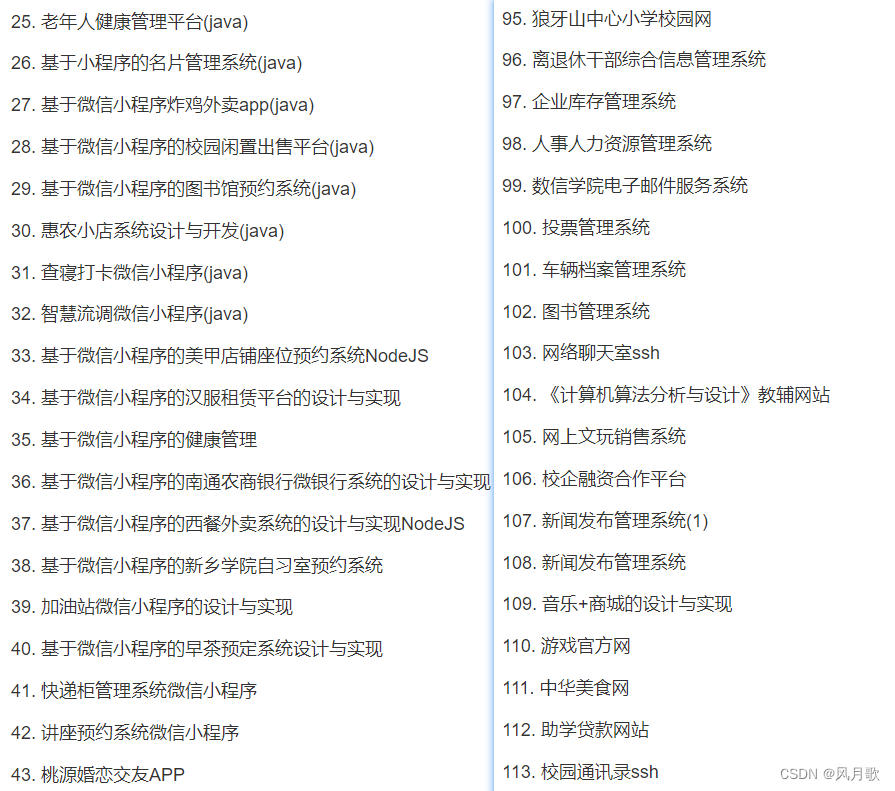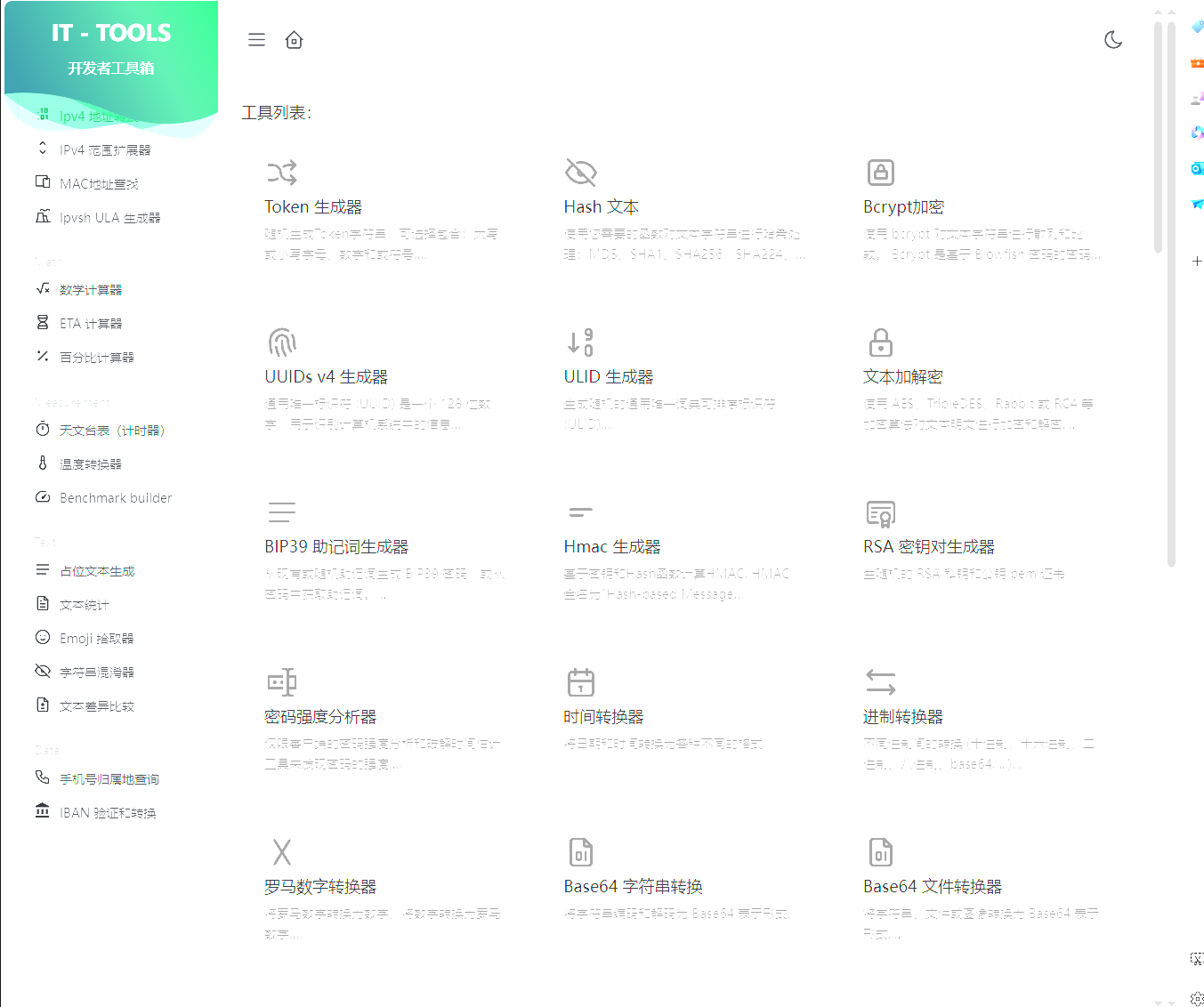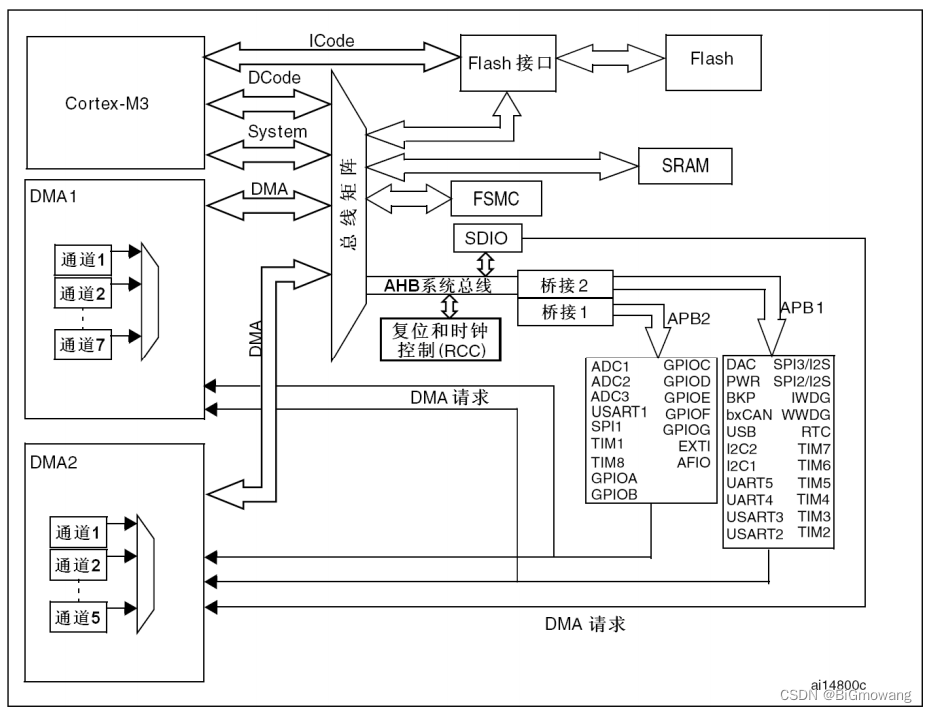🌈个人主页:小新_-
🎈个人座右铭:“成功者不是从不失败的人,而是从不放弃的人!”🎈
🎁欢迎各位→点赞👍 + 收藏⭐️ + 留言📝
🏆所属专栏:话说那些与C++的爱恨情仇 欢迎订阅,持续更新中~~~

✨让小新带着你快乐的学习吧~✨
前言

1. 构造函数
1.1 概念
class Date
{
public:
void Init(int year, int month, int day)
{
_year = year;
_month = month;
_day = day;
}
void Print()
{
cout << _year << "-" << _month << "-" << _day << endl;
}
private:
int _year;
int _month;
int _day;
};
int main()
{
Date d1;
d1.Init(2022, 7, 5);
d1.Print();
Date d2;
d2.Init(2022, 7, 6);
d2.Print();
return 0;
}1.2 特性
class Date
{
public:
// 1.无参构造函数
Date()
{}
// 2.带参构造函数
Date(int year, int month, int day)
{
_year = year;
_month = month;
_day = day;
}
private:
int _year;
int _month;
int _day;
};
void TestDate()
{
Date d1; // 调用无参构造函数
Date d2(2015, 1, 1); // 调用带参的构造函数
// 注意:如果通过无参构造函数创建对象时,对象后面不用跟括号,否则就成了函数声明
// 以下代码的函数:声明了d3函数,该函数无参,返回一个日期类型的对象
// warning C4930: “Date d3(void)”: 未调用原型函数(是否是有意用变量定义的?)
Date d3();
} class Date
{
public:
/*
// 如果用户显式定义了构造函数,编译器将不再生成
Date(int year, int month, int day)
{
_year = year;
_month = month;
_day = day;
}
*/
void Print()
{
cout << _year << "-" << _month << "-" << _day << endl;
}
private:
int _year;
int _month;
int _day;
};
int main()
{
// 将Date类中构造函数屏蔽后,代码可以通过编译,因为编译器生成了一个无参的默认构造函
//数
// 将Date类中构造函数放开,代码编译失败,因为一旦显式定义任何构造函数,编译器将不再
//生成
// 无参构造函数,放开后报错:error C2512: “Date”: 没有合适的默认构造函数可用
Date d1;
return 0;
}class Time
{
public:
Time()
{
cout << "Time()" << endl;
_hour = 0;
_minute = 0;
_second = 0;
}
private:
int _hour;
int _minute;
int _second;
};
class Date
{
private:
// 基本类型(内置类型)
int _year;
int _month;
int _day;
// 自定义类型
Time _t;
};
int main()
{
Date d;
return 0;
}class Time
{
public:
Time()
{
cout << "Time()" << endl;
_hour = 0;
_minute = 0;
_second = 0;
}
private:
int _hour;
int _minute;
int _second;
};
class Date
{
private:
// 基本类型(内置类型)
int _year = 1970;
int _month = 1;
int _day = 1;
// 自定义类型
Time _t;
};
int main()
{
Date d;
return 0;
}class Date
{
public:
Date()
{
_year = 1900;
_month = 1;
_day = 1;
}
Date(int year = 1900, int month = 1, int day = 1)
{
_year = year;
_month = month;
_day = day;
}
private:
int _year;
int _month;
int _day;
};
// 以下测试函数能通过编译吗?
void Test()
{
Date d1;
}
2.析构函数
2.1 概念
2.2 特性
typedef int DataType;
class Stack
{
public:
Stack(size_t capacity = 3)
{
_array = (DataType*)malloc(sizeof(DataType) * capacity);
if (NULL == _array)
{
perror("malloc申请空间失败!!!");
return;
}
_capacity = capacity;
_size = 0;
}
void Push(DataType data)
{
// CheckCapacity();
_array[_size] = data;
_size++;
}
// 其他方法...
~Stack()
{
if (_array)
{
free(_array);
_array = NULL;
_capacity = 0;
_size = 0;
}
}
private:
DataType* _array;
int _capacity;
int _size;
};
void TestStack()
{
Stack s;
s.Push(1);
s.Push(2);
}class Time
{
public:
~Time()
{
cout << "~Time()" << endl;
}
private:
int _hour;
int _minute;
int _second;
};
class Date
{
private:
// 基本类型(内置类型)
int _year = 1970;
int _month = 1;
int _day = 1;
// 自定义类型
Time _t;
};
int main()
{
Date d;
return 0;
}
程序运行结束后输出:~Time()
在main方法中根本没有直接创建Time类的对象,为什么最后会调用Time类的析构函数?
因为:main方法中创建了Date对象d,而d中包含4个成员变量,其中_year, _month,
_day三个是 内置类型成员,销毁时不需要资源清理,最后系统直接将其内存回收即可;而_t是Time类对象,所以在 d销毁时,要将其内部包含的Time类的_t对象销毁,所以要调用Time类的析构函数。但是:main函数中不能直接调用Time类的析构函数,实际要释放的是Date类对象,所以编译器会调用Date类的析构函 数,而Date没有显式提供,则编译器会给Date类生成一个默认的析构函数,目的是在其内部调用Time类的析构函数,即当Date对象销毁时,要保证其内部每个自定义对象都可以正确销毁 main函数中并没有直接调用Time类析构函数,而是显式调用编译器为Date类生成的默认析构函数
注意:创建哪个类的对象则调用该类的析构函数,销毁那个类的对象则调用该类的析构函数
3. 拷贝构造函数
3.1 概念

3.2特征
class Date
{
public:
Date(int year = 1900, int month = 1, int day = 1)
{
_year = year;
_month = month;
_day = day;
}
// Date(const Date& d) // 正确写法
Date(const Date& d) // 错误写法:编译报错,会引发无穷递归
{
_year = d._year;
_month = d._month;
_day = d._day;
}
private:
int _year;
int _month;
int _day;
};
int main()
{
Date d1;
Date d2(d1);
return 0;
}
class Time
{
public:
Time()
{
_hour = 1;
_minute = 1;
_second = 1;
}
Time(const Time& t)
{
_hour = t._hour;
_minute = t._minute;
_second = t._second;
cout << "Time::Time(const Time&)" << endl;
}
private:
int _hour;
int _minute;
int _second;
};
class Date
{
private:
// 基本类型(内置类型)
int _year = 1970;
int _month = 1;
int _day = 1;
// 自定义类型
Time _t;
};
int main()
{
Date d1;
// 用已经存在的d1拷贝构造d2,此处会调用Date类的拷贝构造函数
// 但Date类并没有显式定义拷贝构造函数,则编译器会给Date类生成一个默认的拷贝构
//造函数
Date d2(d1);
return 0;
}// 这里会发现下面的程序会崩溃掉?这里就需要我们以后讲的深拷贝去解决。
typedef int DataType;
class Stack
{
public:
Stack(size_t capacity = 10)
{
_array = (DataType*)malloc(capacity * sizeof(DataType));
if (nullptr == _array)
{
perror("malloc申请空间失败");
return;
}
_size = 0;
_capacity = capacity;
}
void Push(const DataType& data)
{
// CheckCapacity();
_array[_size] = data;
_size++;
}
~Stack()
{
if (_array)
{
free(_array);
_array = nullptr;
_capacity = 0;
_size = 0;
}
}
private:
DataType* _array;
size_t _size;
size_t _capacity;
};
int main()
{
Stack s1;
s1.Push(1);
s1.Push(2);
s1.Push(3);
s1.Push(4);
Stack s2(s1);
return 0;
}
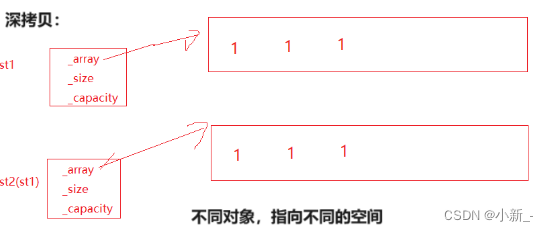

- 使用已存在对象创建新对象
- 函数参数类型为类类型对象
- 函数返回值类型为类类型对象
class Date
{
public:
Date(int year, int minute, int day)
{
cout << "Date(int,int,int):" << this << endl;
}
Date(const Date& d)
{
cout << "Date(const Date& d):" << this << endl;
}
~Date()
{
cout << "~Date():" << this << endl;
}
private:
int _year;
int _month;
int _day;
};
Date Test(Date d)
{
Date temp(d);
return temp;
}
int main()
{
Date d1(2022,1,13);
Test(d1);
return 0;
}
4.赋值运算符重载
4.1 运算符重载
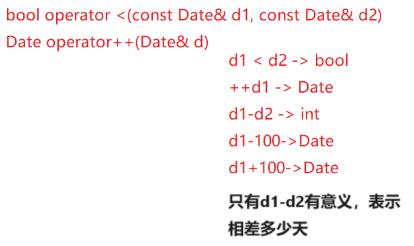
注意:不能通过连接其他符号来创建新的操作符:比如 operator@重载操作符必须有一个类类型参数用于内置类型的运算符,其含义不能改变,例如:内置的整型 + ,不 能改变其含义作为类成员函数重载时,其形参看起来比操作数数目少 1 ,因为成员函数的第一个参数为隐藏的 this.* 、::、sizeof、 ? : 、. 注意以上 5 个运算符不能重载。这个经常在笔试选择题中出现。
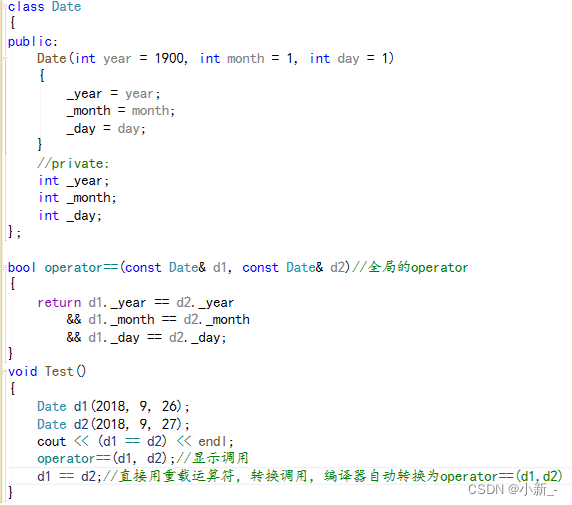
这里会发现运算符重载成全局的就需要成员变量是公有的,那么问题来了,假如把类的成员变量改为私有 则 operator 会报错 ,此时封装性如何保证?
这里其实可以用我们后面学习的友元解决,或者干脆重载成成员函数。
即当重载成为全局 无法访问类的私有成员,解决方法:
1.提供get和set方法
2、友元(后面讲)
3、重载为成员函数


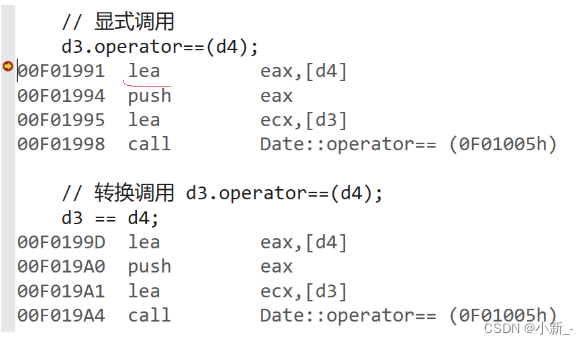
4.2 赋值运算符重载

- 参数类型:const T&,传递引用可以提高传参效率
- 返回值类型:T&,返回引用可以提高返回的效率,有返回值目的是为了支持连续赋值
- 检测是否自己给自己赋值
- 返回*this :要复合连续赋值的含义
- 重载的赋值运算符函数参数只有一个,另一个通过this指针传递
class Date
{
public:
Date(int year = 1900, int month = 1, int day = 1)
{
_year = year;
_month = month;
_day = day;
}
Date(const Date& d)//拷贝构造
{
_year = d._year;
_month = d._month;
_day = d._day;
}
Date& operator=(const Date& d)//赋值拷贝
{
if (this != &d)
{
_year = d._year;
_month = d._month;
_day = d._day;
}
return *this;
}
private:
int _year;
int _month;
int _day;
};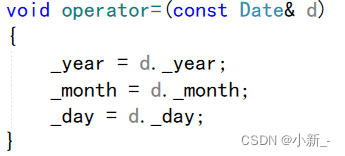

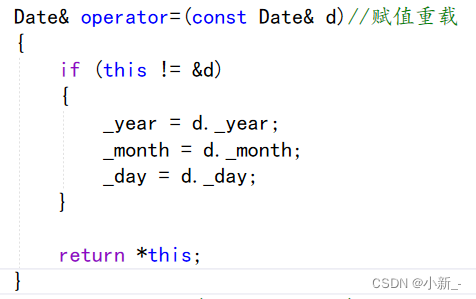
4.3传值返回和传引用返回区别

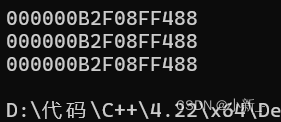


class Time
{
public:
Time()
{
_hour = 1;
_minute = 1;
_second = 1;
}
Time& operator=(const Time& t)
{
if (this != &t)
{
_hour = t._hour;
_minute = t._minute;
_second = t._second;
}
return *this;
}
private:
int _hour;
int _minute;
int _second;
};
class Date
{
private:
// 基本类型(内置类型)
int _year = 1970;
int _month = 1;
int _day = 1;
// 自定义类型
Time _t;
};
int main()
{
Date d1;
Date d2;
d1 = d2;
return 0;
}typedef int DataType;
class Stack
{
public:
Stack(size_t capacity = 10)
{
_array = (DataType*)malloc(capacity * sizeof(DataType));
if (nullptr == _array)
{
perror("malloc申请空间失败");
return;
}
_size = 0;
_capacity = capacity;
}
void Push(const DataType& data)
{
// CheckCapacity();
_array[_size] = data;
_size++;
}
~Stack()
{
if (_array)
{
free(_array);
_array = nullptr;
_capacity = 0;
_size = 0;
}
}
private:
DataType* _array;
size_t _size;
size_t _capacity;
};
int main()
{
Stack s1;
s1.Push(1);
s1.Push(2);
s1.Push(3);
s1.Push(4);
Stack s2;
s2 = s1;
return 0;
}我们运行会中断

4.4前置++和后置++的重载
class Date{public :Date ( int year = 1900 , int month = 1 , int day = 1 ){_year = year ;_month = month ;_day = day ;}// 前置 ++ :返回 +1 之后的结果// 注意: this 指向的对象函数结束后不会销毁,故以引用方式返回提高效率Date & operator ++ (){_day += 1 ;return * this ;}// 后置 ++ :// 前置 ++ 和后置 ++ 都是一元运算符,为了让前置 ++ 与后置 ++ 形成能正确重载// C++ 规定:后置 ++ 重载时多增加一个 int 类型的参数,但调用函数时该参数不用传递,编译器自动传递// 注意:后置 ++ 是先使用后 +1 ,因此需要返回 +1 之前的旧值,故需在实现时需要先将 this 保存一份,然后给 this+1// 而 temp 是临时对象,因此只能以值的方式返回,不能返回引用Date operator ++ ( int ){Date temp ( * this );_day += 1 ;return temp ;}private :int _year ;int _month ;int _day ;};int main (){Date d ;Date d1 ( 2022 , 1 , 13 );d = d1 ++ ; // d: 2022,1,13 d1:2022,1,14d = ++ d1 ; // d: 2022,1,15 d1:2022,1,15return 0 ;}
5.日期类的实现
为了检验这几节的学习效果,如果可以手搓日期类就代表掌握了,读者朋友可以参考并实现,以助于更好掌握该部分知识
#define _CRT_SECURE_NO_WARNINGS 1
#define _CRT_SECURE_NO_WARNINGS 1
#include<iostream>
using namespace std;
#include<assert.h>
class Date
{
public:
// 获取某年某月的天数
int GetMonthDay(int year, int month)
{
assert(month > 0 && month < 13);
static int monthday[13] = { -1,31,28,31,30,31,30,31,31,30,31,30,31 };
if (month == 2 && (year % 4 == 0 && year % 100 != 0) || year % 400 == 0)
{
return 29;
}
else
{
return monthday[month];
}
}
// 全缺省的构造函数
Date(int year, int month, int day)
{
_year = year;
_month = month;
_day = day;
}
// 拷贝构造函数
// d2(d1)
Date(const Date& d)
{
_year = d._year;
_month = d._month;
_day = d._day;
}
// 赋值运算符重载
// d2 = d3 -> d2.operator=(&d2, d3)
Date& operator=(const Date& d)
{
if (this != &d)
{
_year = d._year;
_month = d._month;
_day = d._day;
}
return *this;
}
// 析构函数
~Date()
{
_year = 0;
_month = 0;
_day = 0;
}
// 日期+=天数
Date& operator+=(int day)
{
if (day < 0)
{
return*this -= -day;
}
_day += day;
while (_day > GetMonthDay(_year, _month))
{
_day = _day - GetMonthDay(_year, _month);
++_month;
if (_month == 13)
{
_month = 1;
}
}
return*this;
}
// 日期+天数
Date operator+(int day)
{
Date tmp = *this;
tmp += day;
return tmp;
}
// 日期-天数
Date operator-(int day)
{
Date tmp = *this;
tmp -= day;
return tmp;
}
// 日期-=天数
Date& operator-=(int day)
{
if (day < 0)
{
return *this += -day;
}
_day -= day;
while (_day <= 0)
{
--_month;
if (_month == 0)
{
_month = 12;
_year--;
}
_day += GetMonthDay(_year, _month);
}
return *this;
}
// 前置++
Date& operator++()
{
*this += 1;
return*this;
}
// 后置++
Date operator++(int)
{
Date tmp(*this);
*this += 1;
return tmp;
}
// 后置--
Date operator--(int)
{
Date tmp(*this);
*this -= 1;
return tmp;
}
// 前置--
Date& operator--()
{
*this -= 1;
return*this;
}
// >运算符重载
bool operator>(const Date& d)
{
if (_year > d._year)
{
return true;
}
else if (_year == d._year)
{
if (_month > d._month)
{
return true;
}
else if (_month == d._month)
{
return _day > d._day;
}
}
return false;
}
// ==运算符重载
bool operator==(const Date& d)
{
return _year == d._year && _month == d._month && _day == d._day;
}
// >=运算符重载
bool operator >= (const Date& d)
{
return *this > d || *this == d;
}
// <运算符重载
bool operator < (const Date& d)
{
return !(*this >= d);
}
// <=运算符重载
bool operator <= (const Date& d)
{
return !(*this > d);
}
// !=运算符重载
bool operator != (const Date& d)
{
return !(*this == d);
}
// 日期-日期 返回天数
int operator-(const Date& d);
void Print()
{
cout << _year << "年" << _month << "月" << _day << "日" << endl;
}
private:
int _year;
int _month;
int _day;
};
int main()
{
Date d1(2025, 12, 25);
d1 -= 600;
d1.Print();
return 0;
}
class Date
{
public:
Date(int year, int month, int day)
{
_year = year;
_month = month;
_day = day;
}
void Print()
{
cout << "Print()" << endl;
cout << "year:" << _year << endl;
cout << "month:" << _month << endl;
cout << "day:" << _day << endl << endl;
}
void Print() const
{
cout << "Print()const" << endl;
cout << "year:" << _year << endl;
cout << "month:" << _month << endl;
cout << "day:" << _day << endl << endl;
}
private:
int _year; // 年
int _month; // 月
int _day; // 日
};
void Test()
{
Date d1(2022,1,13);
d1.Print();
const Date d2(2022,1,13);
d2.Print();
}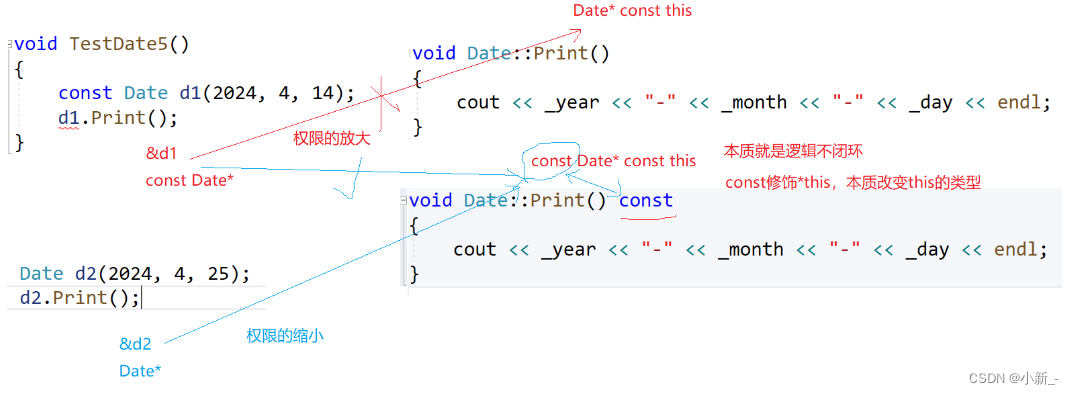
class Date
{
public:
Date* operator&()
{
return this;
}
const Date* operator&()const
{
return this;
}
private:
int _year; // 年
int _month; // 月
int _day; // 日
};
最后,感谢大家的观看!



